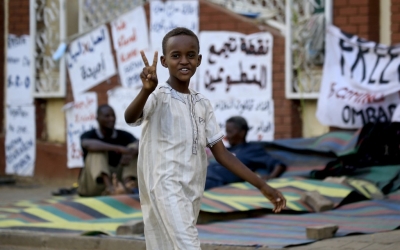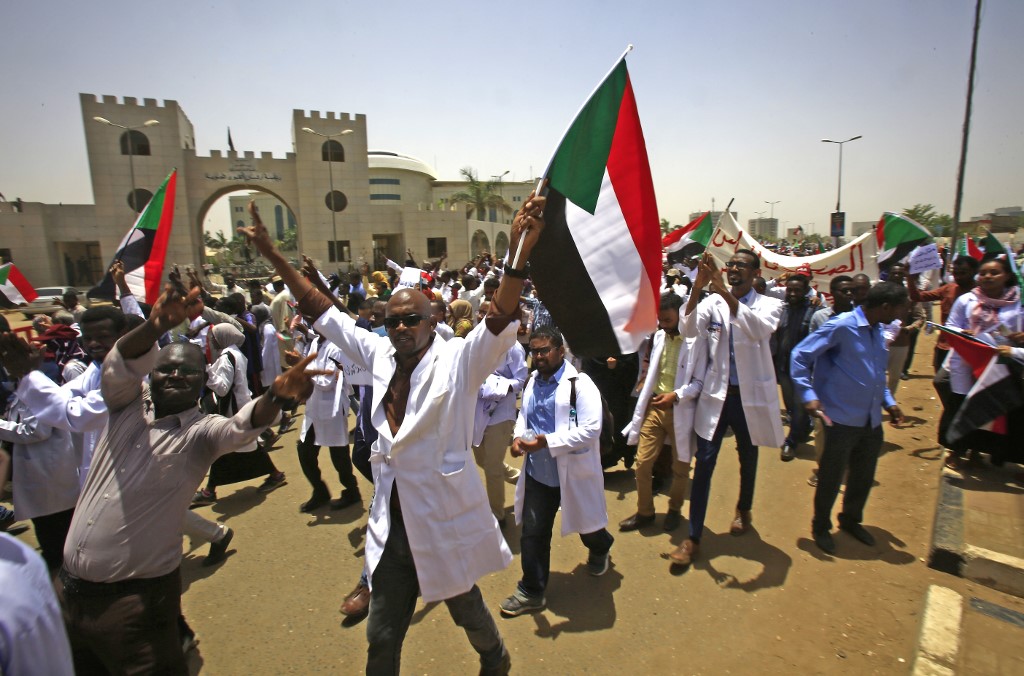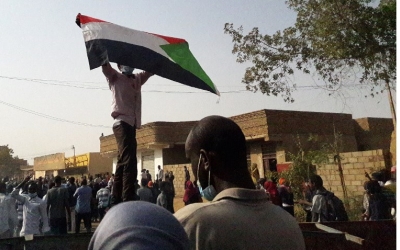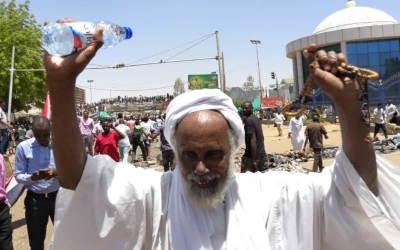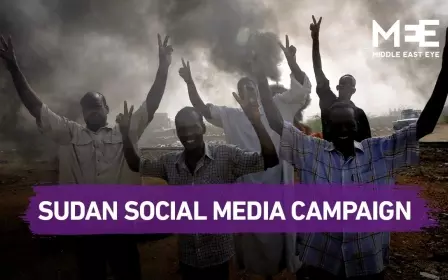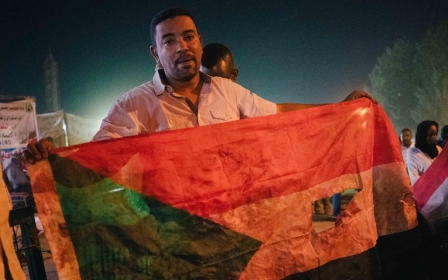Six months on: Sudan's deep state is still going strong
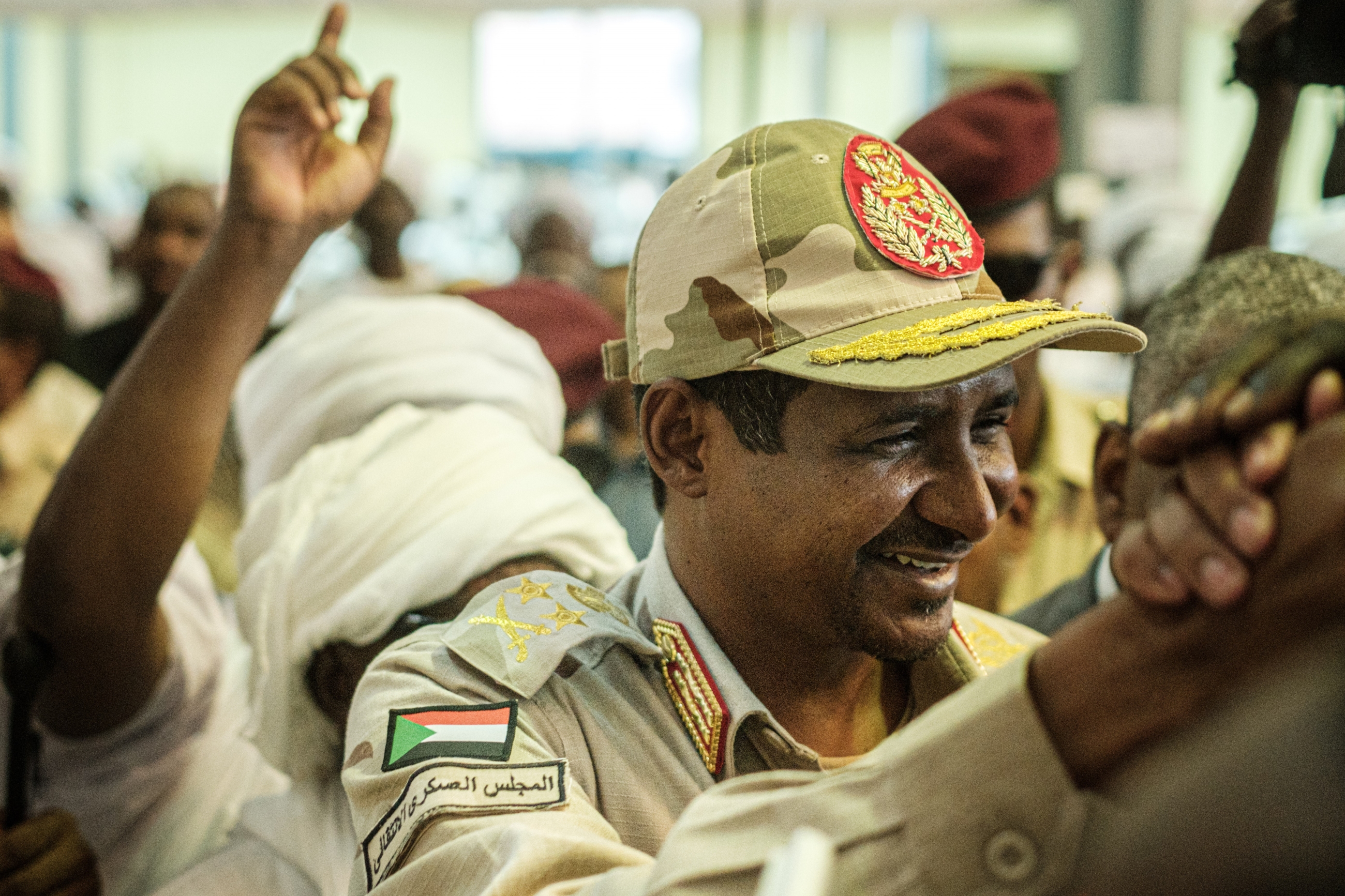
On 11 April, following a four-month-long popular uprising, the Sudanese dictator Omar al-Bashir was removed by an in-house coup conducted by military officers that went on to form a Transitional Military Council (TMC).
Bashir went, but the fate of the array of parallel security agencies and militias, patronage systems and corrupt parastatals that flourished under his regime remained unclear.
A devastating comeback
There has been much speculation concerning the ability of the revolution to uproot Bashir’s "Islamist deep state". By early June, the Islamists themselves appeared to be faring badly.
The TMC was shunning its key Gulf backer, Qatar, and had purged itself of its three most prominent Islamist members under pressure from the opposition Forces of Freedom and Change.
Yet on 3 June, the deep state launched a devastating comeback, as the Rapid Support Force militias created by Bashir’s regime massacred over 100 of the protestors who had gathered inside army headquarters to demand change.
There has been much speculation concerning the ability of the revolution to uproot Bashir’s 'Islamist deep state'
Lessons might be learned from the attempted dissolution of former Sudanese president Jafa’ar Nimeiri’s "deep state", following the intifada of 1985. Under pressure from the opposition National Alliance and protestors on the street, the TMC of the day under Siwar al-Dahab - who led the removal of Nimeiri in 1985 - was quick to dismantle both the ruling party, the Sudan Socialist Union (SSU), and the closely linked security service, the State Security Organisation (SSO).
The regime’s commitment to socialist ideology had long since waned, and in 1985 SSU was largely comprised of opportunists, Nimeiri loyalists, and Islamists who had reconciled with the regime in 1977.
With no ideological weight behind them, therefore, both the SSU and SSO were easily to dismantle, and under the subsequent transitional and parliamentary regimes the prerogatives of the dissolved SSO were granted to the regular police.
The old 'deep state'
However, the majority of those who served in the old "deep state" were neither put in jail nor reconciled with the new parliamentary regime. The result was that a financially well resourced Islamic Movement was able to capitalise on their resentment and buy their loyalty to the coup led by Hasan al-Turabi and Omar al-Bashir in 1989.
Sudan's protests: A brief timeline
+ Show - HideSudanese protests have evolved in the space of less than six months from complaints about bread prices to calls for long-term leader Omar al-Bashir to go and demands for a civilian-led transition to democracy.
Here's a summary of the key moments so far since the protests began.
19 December 2018: People take to the streets in the city of Atbara to protest against a government decision to triple the price of bread, torching a local ruling party office. By the next day protesters on the streets of Khartoum and other cities calling for "freedom, peace, justice". Police try to disperse the crowds, resulting in at least eight deaths. Dozens more will be killed in the weeks of protest that follow
22 February 2019: Sudanese President Omar al-Bashir declares a nationwide state of emergency. He swears in a new prime minister two days later, as riot police confront hundreds of protesters calling for him to resign
6 April: Thousands gather outside the army's headquarters in Khartoum, chanting "one army, one people" in a plea for the military's support. They defy attempts by state security forces to dislodge them and troops intervene to protect them
11 April: Military authorities announce they have removed Bashir and that a transitional military council will govern for two years. Despite celebrations at Bashir's demise, protest leaders denounce the move as a "coup" and the protesters remain camped outside army headquarters.
14 April: Protest leaders call on the military council to transfer power to a civilian government
20 April: Sudan's military rulers hold a first round of talks with protest leaders
27 April: The two sides agree to establish a joint civilian-military ruling council, but talks stall over differences in the composition of the council, with both sides demanding a a majority
15 May: With negotiators reported to be close to agreeing a three-year transition to civilian rule, military leaders suspend talks and insist protesters remove barricades outside the army's headquarters. Talks resume on 19 May but break down again on 20 May, with the opposition insistent that a civilian must head the transitional governing body
28 May: Thousands of workers begin a two-day strike to pressure the military rulers and call for civilian government
3 June: At least 35 people killed and hundreds injured, according to opposition-aligned doctors, as security forces firing live ammunition move to disperse the protest camp outside army headquarters
4 June: General Abdel Fattah al-Burhan, the head of the military council, announces that all previous agreements with protest leaders are scrapped and says elections will be held in nine months
This process probably began back in 1985 when Bashir himself served on the committees charged with dissolving the SSO and capturing its intelligence networks. Ahmad Ibn Auf, the close Bashir confidante whose one-day takeover on 11 April 2019 was so vigorously rejected by the public, was himself one of the officers removed in 1985 and returned by the Salvation Regime in 1989.
The majority of those who served in the old ‘deep state’ were neither put in jail nor reconciled with the new parliamentary regime
Turabi, the ideological architect of the Salvation Regime, sought to create a parallel set of governing institutions to pursue his "civilizational project" while disguising the Islamist character of the regime.
Blending ideological hubris with ultra-pragmatism as only he could, he co-opted a number of opportunists from the old military regime into these new institutions, including former SSO officers like al-Fatih Irwa, who has recently become an executive director of one of Sudan’s major telecommunication firms.
Irwa is certainly no die-hard Islamist – under Nimeiri’s regime, he had worked with the CIA to airlift Ethiopian Jews to Israel as part of "Operation Moses".
The Islamists themselves captured a "deep state" created in the name of another ideology in the 1980s. Now, their own deep state is being repurposed. Many years in power have led to a loosening of the ties between the Islamist Movement and the state.
Arab nationalism
In 2016, the International Crisis Group suggested that Sudan was moving away from Islamism towards an "internationalised Arab nationalism" designed to appeal to anti-Islamist regional hegemons such as Saudi Arabia, Egypt and the United Arab Emirates.
Bashir marginalised the leading Islamist figures in the National Congress Party, and empowered Janjaweed militias that had assisted his deadly counter-insurgency in Darfur by incorporating them into the army and National Intelligence and Security Services (NISS) via the Rapid Support Forces (RSF).
Their ability to exploit Darfur’s burgeoning gold industry gave the RSF and their commander, the former Janjaweed militia leader Mohamed Hamdan Dagalo, aka "Hemeti", access to the corrupt network of companies at the heart of the deep state.
The Janjaweed militias, as is now being observed, are very different from the Islamist-orientated Popular Defence Force (PDF) militias that were initially set up by the regime in 1989 to fight the war against the Sudan People’s Liberation Army.
The ideology that helped to inspire their creation was a narrow race-based vision of Arab identity. In the Darfur conflict, they fought against a former Popular Defence Force commander, Khalil Ibrahim and, when incorporated into the Rapid Support Forces, they fought on behalf of Saudi Arabia against Houthi Islamists in Yemen.
And it was the RSF under Hemeti which was the major military backer of the rise of Abdel-Fattah Burhan - who oversaw Sudanese forces operating in Yemen - and the TMC.
The anti-Islamist axis
Since the rise of the TMC, individuals close to the anti-Islamist Saudi-Emirati-Egyptian axis have sought to gain control over the deep state. Abu Bakr Mustafa, who replaced Salah Gosh as head of the National Intelligence and Security Services, has firm ties to Saudi Arabia and Egypt, having served in diplomatic posts in both countries.
While the Rapid Support Forces have gone from strength to strength, the TMC agreed with the opposition Forces of Freedom and Change that the Popular Defence Forces would be incorporated into the regular army and their accounts in the Central Bank of Sudan would be suspended.
Given the ideological character of the original coup that brought Bashir into power in 1989, it is unsurprising that as much popular anger during the revolution has been levelled at Islamism as it has at the state per se. Both the TMC and opposition politicians have been conscious of this.
The Forces of Freedom and Change appeared happy to urge on a policy of attacking the Islamists, rather than the deep state as a whole. Many politicians from the opposition alliance themselves headed to the Emirates after the uprising, including rebel leaders hoping for Emirati mediation between the TMC and opposition.
One prominent rebel leader, Yasir Arman, observed on a visit to Dubai that any talk of division between his allies and Hemeti was "fabrications by elements of the old regime". He subsequently wrote that Burhan and Hemeti, having no Islamist ties, were potential "allies" of the Forces of Freedom and Change. He encouraged Sudan’s revolutionaries to vent their anger against three Islamist generals on the TMC - who were indeed subsequently removed.
Unfortunately, his efforts at pragmatism came back to haunt him when Hemeti’s forces slaughtered protestors en masse on 3 June, and the TMC then forcibly removed Arman himself to South Sudan.
The Islamists may have been hit hard, but the deep state is still going strong.
The views expressed in this article belong to the author and do not necessarily reflect the editorial policy of Middle East Eye.
This article is available in French on Middle East Eye French edition.
Middle East Eye propose une couverture et une analyse indépendantes et incomparables du Moyen-Orient, de l’Afrique du Nord et d’autres régions du monde. Pour en savoir plus sur la reprise de ce contenu et les frais qui s’appliquent, veuillez remplir ce formulaire [en anglais]. Pour en savoir plus sur MEE, cliquez ici [en anglais].



